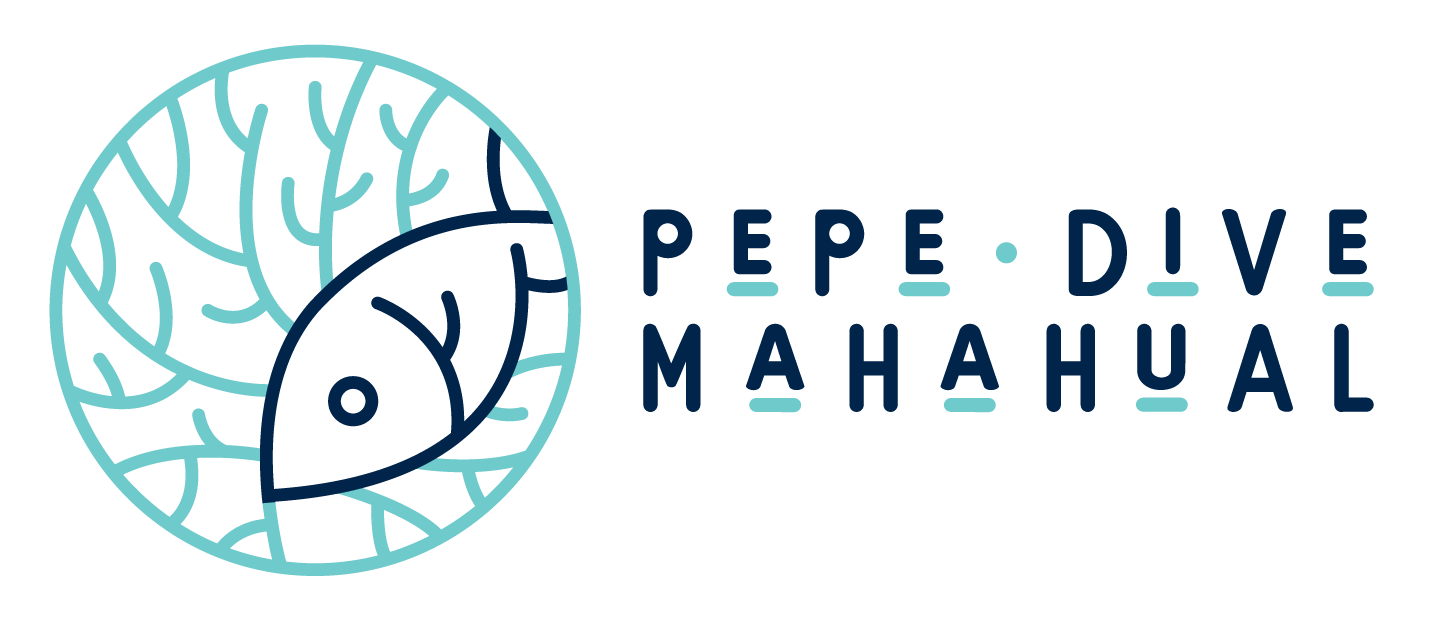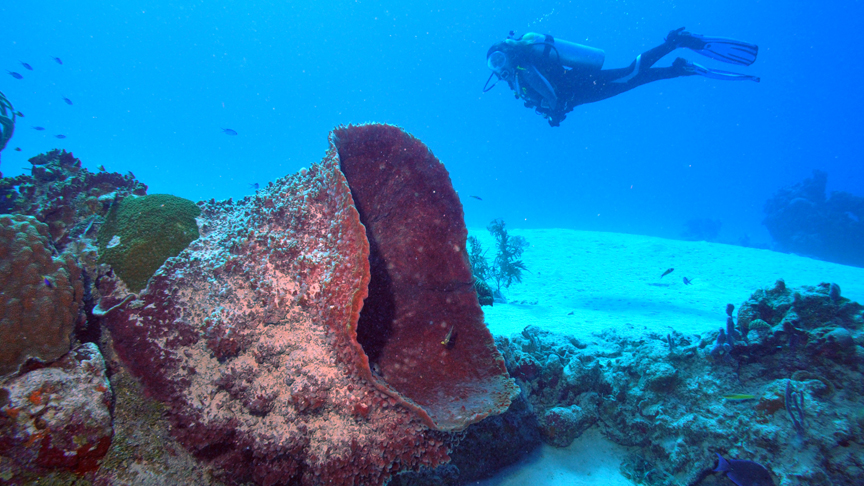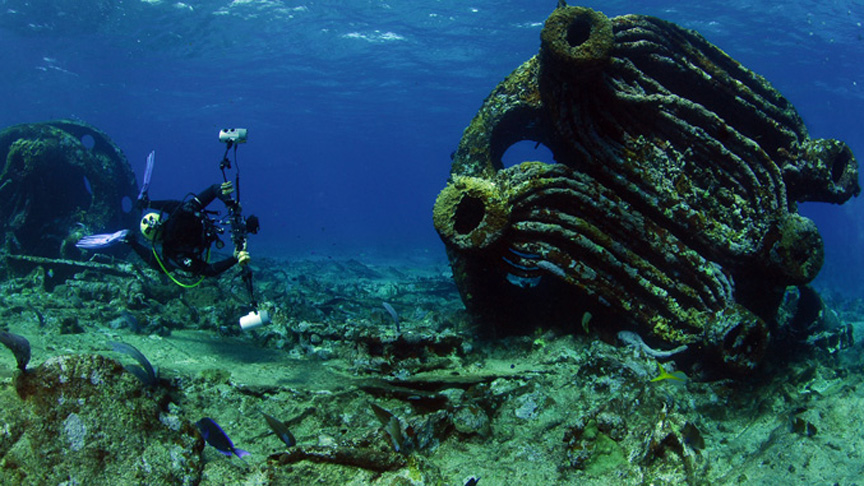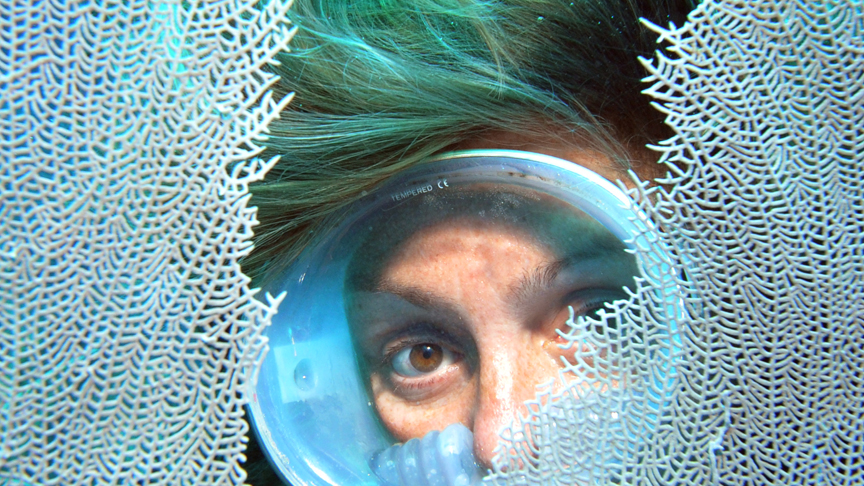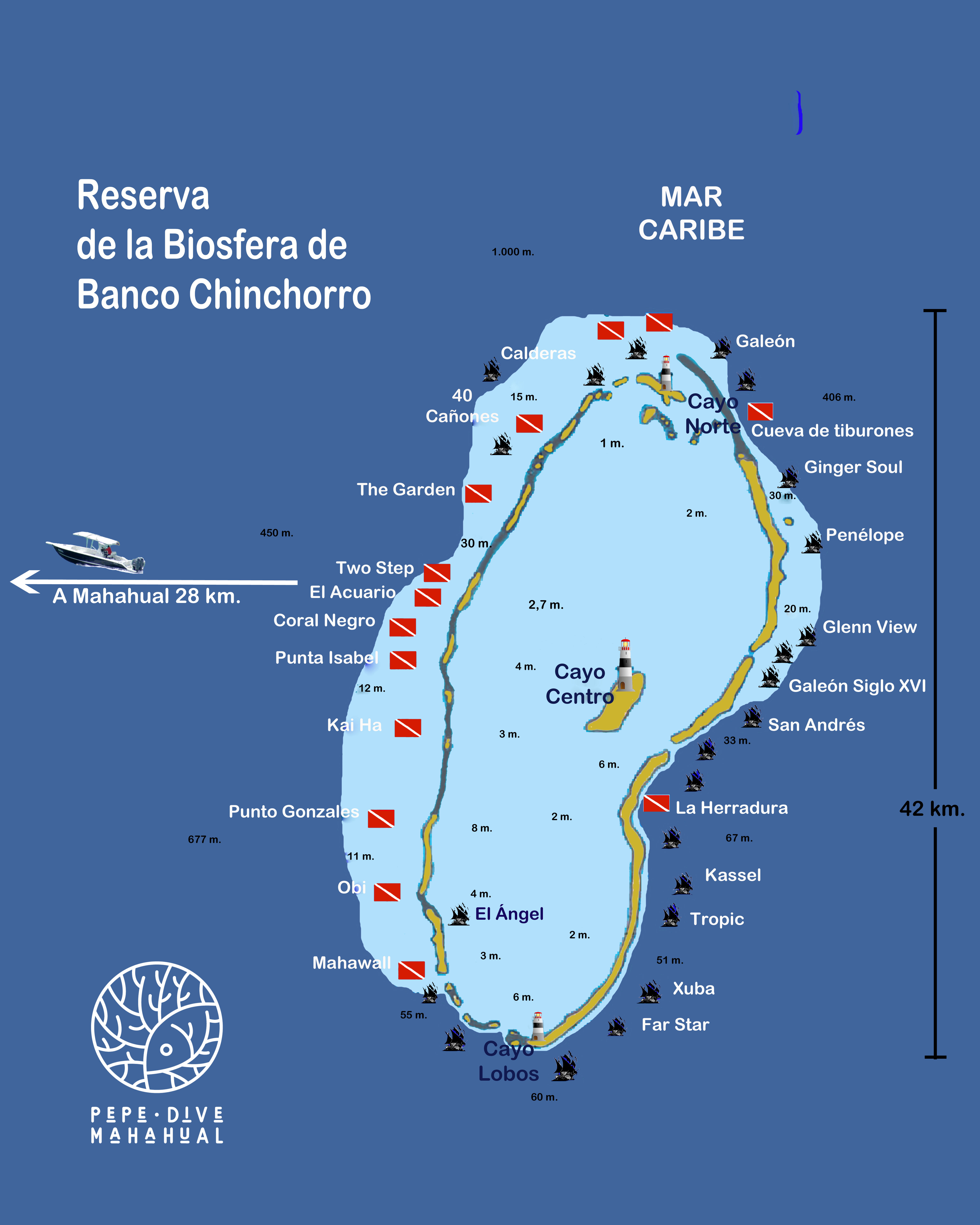The Caribbean garden
Mahahual is the gateway to the Banco Chinchorro Biosphere Reserve, a coral atoll that takes the limelight in this region of remote Mexico. Expeditions to Chinchorro are very special because there are no trips every day, and they are conditioned, first, by the weather -it is important that sea conditions are good- and, second, by the number of divers -a minimum group of six divers is needed-.
The atoll is famous for its black coral, nurse sharks, turtles, crocodiles, lobsters and pink snails, but also has archaeological sites in the form of sunken ships. A submerged cemetery that houses a total of 70 historic shipwrecks from the sixteenth century to the present. Wreck expeditions only take place in summer and on specific dates.
There are only a very few boats in Mahahual that have permission to operate in the Chinchorro Reserve. Pepe Dive Mahahual belongs to the "Cooperativa Turística Paraíso del Caribe", that has two of these boats that alternate their trips according to the needs. One of them, the Gran Kraken, with a capacity of 20 people, is the largest and most comfortable of those that operate in the atoll.
The operation starts at 8 am at Pepe Dive Mahahual's facilities. Clients must have already completed all the necessary paperwork the day before the trip: signing of liability papers; presentation of certifications; equipment testing; tour payment, etc. On the day of the trip, only the environmental fee ($360 MXN per visitor for Mexicans and residents or $725 MXN for international tourists *) for the conservation of the park must be paid in cash before boarding.
The trip to the atoll lasts between one and a half and two hours, depending on sea conditions. Once in the reserve, we do 2 dives. There are many dive options: Gatas, Baliza, Teresitas, Punta Gonzalez, Acuario, Coral Negro, El Muro, El Solitario, etc. The choice of the dive site corresponds to the instructor in charge of the group and the captain of the boat, who will decide the best option taking into account the state of the sea, currents, visibility, divers' experience, etc. Between the 2 dives, we take the chance to rest and eat a lunch with sandwiches and fruit.
Sometimes, and in special occasions, we also visit the island Cayo Centro, in the heart of the Reserve, towalk around the small island to observe the crocodiles and giant iguanas.
After finishing the tour we start the way back to Mahahual, where we would be arriving normally between 15 and 16h.
Read more about Biosecurity measures for visitors to Banco Chinchorro.
Diving tour to Banco Chinchorro (2 dives): $3,700 MXN
(With promo price with cash payment: $3,400 MXN)
Snorkel tour to Banco Chinchorro (2 snorkel): $2,700 MXN
(With promo price with cash payment: $2,500 MXN)
*Fares of the environmental tax 2025:
-International travellers: $725 MXN
-Mexicans y residents in México -50%: $360 MXN
-Exempted: kids under 12 y/o, disabled, elderly Mexicans (INAPAM) and Mexican pensioners and retirees
-Mexican students and teachers with id -75%: $180 MXN
DIVING PACKAGE 2 DAYS CHINCHORRO AND MAHAHUAL (4 dives): $4,750 MXN (see conditions in "PACKAGES")
DIVING PACKAGE 3 DAYS CHINCHORRO, MAHAHUAL Y XCALAK (6 dives): $7,500 MXN (see conditions in "PACKAGES")
USEFUL INFORMATION
Our diving tour in Chinchorro, a beautiful reef atoll declared as Biosphere reserve, will allow you to explore its reefs plenty of marine life.
Departure time: 8.00 am
Tour length: 8 hours
Includes water, soft drinks and lunch aboard.
Does not include environmental tax to be paid to enter the Reserve.
For organizational reasons and also the high demand of this tour, it is essential to BOOK in ADVANCE, paying a deposit of $500 MXN per person, either in a Mexican bank account or Paypal.
In case of cancellation of the tour due to weather conditions or attributable to Pepe Dive Mahahual the full amount of the deposit would be refunded.
Subject to good weather and sea conditions and minimum group.
WHAT DO I NEED?
Swimming suit and dry clothes for change
Rain coat for water and wind.
Cap/hat and sunglasses
Biodegradable sun screen
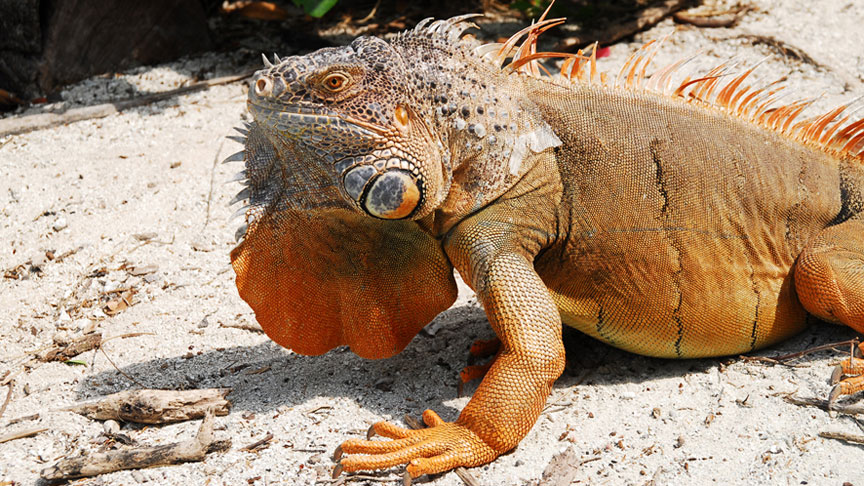
The island
Going to the atoll and not knowing the island of Cayo Centro is as if you had never been to Banco Chinchorro. We are the only ones who maintain the old route to the island thanks to the fact that our captains (former fishermen of the area) know how to move safely among the numerous reefs that protrude from the water. In Cayo Centro, formed by mangrove, palm and bushes, you can observe the large crocodiles and the huge and colorful iguanas that roam freely between the fishermen's shacks and the park rangers' biological station.
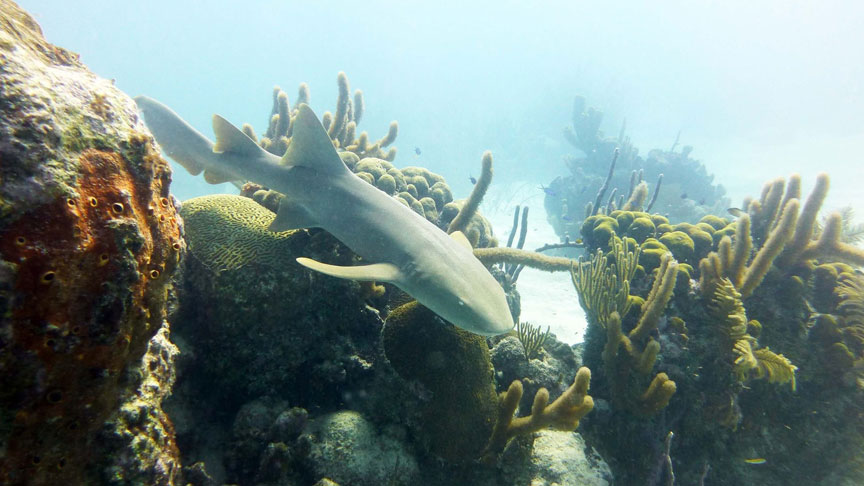
The nurse sharks
They are the great attraction of diving in these reefs. The nurse shark is a very common species in the Caribbean. Normally it has a very passive behavior, we find them sleeping on the sand and moves away when we approach it. However, in Chinchorro they behave very differently, it could even be said that they show a unique behavior in their species: very active during the whole dive, interacting with the divers, that is why we must be very cautious when diving with them and keep our hands well guarded on our body and avoid physical contact with the sharks.
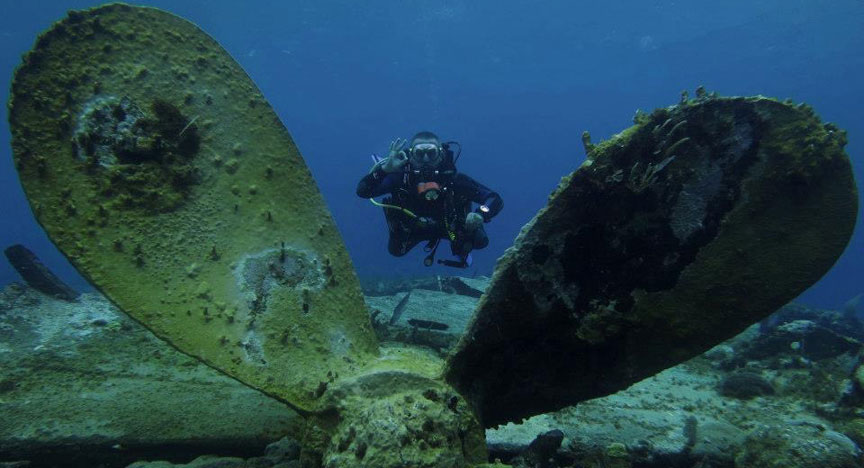
The wrecks
In the farthest area of Chinchorro, in the Eastern part of the atoll, there is one of the largest underwater cemeteries of shipwrecks, with shipwrecks dating from the sixteenth century to the present. For climatic reasons, the only viable time to visit them is in summer, when we organize a couple of expeditions there. It is a real journey back in time, where we can be transported to the era of the mythical galleons and experience the exciting battles between pirates and the British Empire, and shortly after enter the era of the great steamships in the midst of the Industrial Revolution.
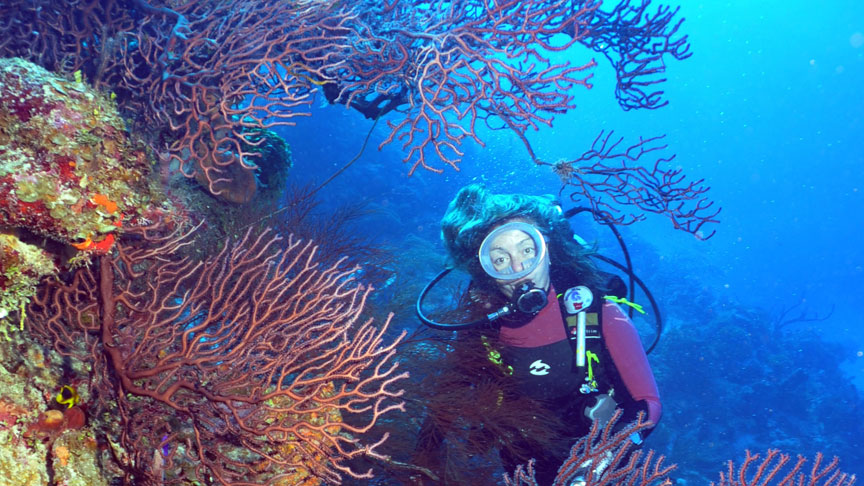
Coral Negro
It is the indispensable diving in your first visit to this place. Located in the North-East side of the atoll, it is formed by a sand slope where big coral structures stand out. It is full of sea life and the average depth is 65 feet.
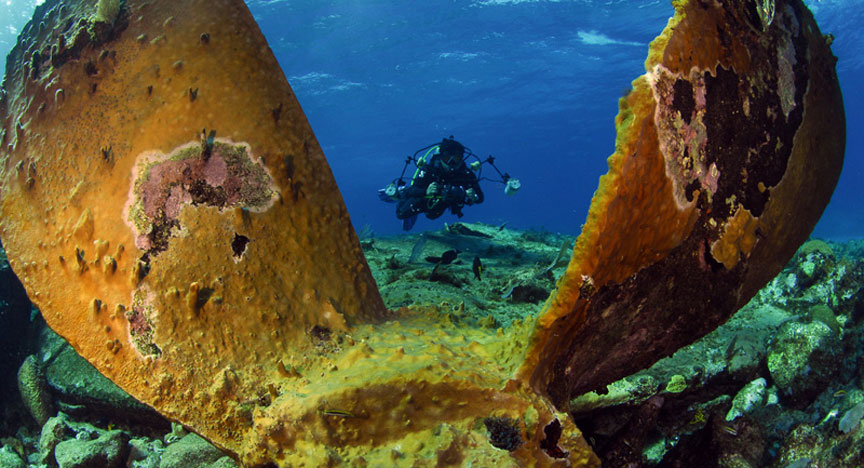
Ginger Soul
When the sea conditions allow it, you can go to see this wreck located in the East of the atoll. It is a cargo ship, a Nineteenth century steamer, that still has all its machinery spread all over a very healthy and clean shallow reef. The most famous part: its huge propeller.

El Acuario
Naturally, Chinchorro has also its "Aquarium". A place full of marine life which landscape combines coral reef and white sand. The nurse sharks are very common here and they use to be very curious.
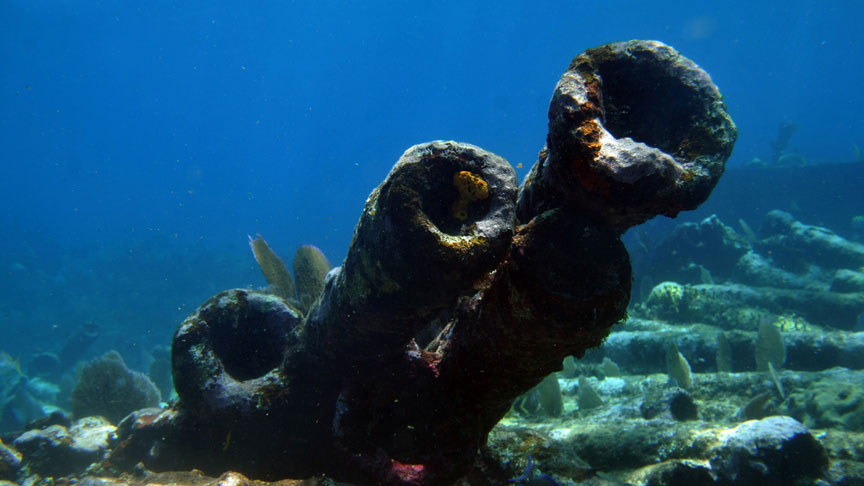
40 Cañones
This is the most known wreck in Chinchorro. A war ship from Seventeenth century -probable in a battle- in a big sandbank at 26 feet in depth. The boat's wood structure has already disappeared but it is still possible to see 30 bronze canyons.
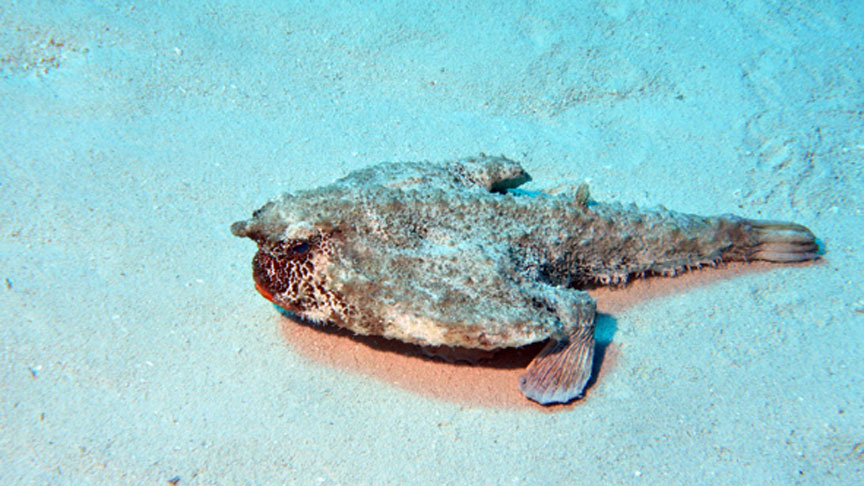
Santa Teresita
It is formed by a beatiful coral wall, steep but not very deep (58 feet maximum). It is very common to see morays, lobsters, groupers, parrot fishes and turtles. If you look further to the blue, maybe you will also see a shark crossing.
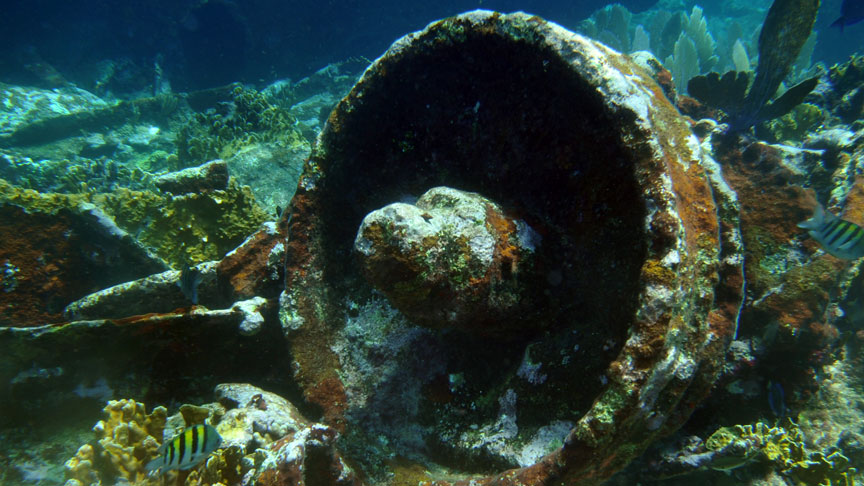
Calderas
It is another wreck located in the north side, close to Cayo Lobos -where nowadays there is a navy base-. It is a Nineteenth century steamer merchant and it is known due to its huge boiler that almost reaches the water surface. It is a shallow and calm diving.
